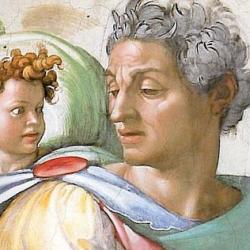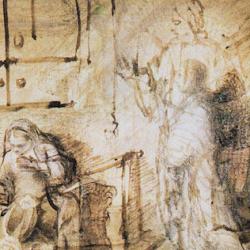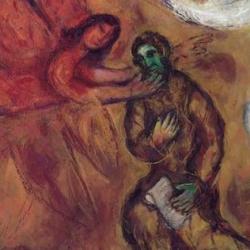The last two lines of Isaiah 14:29 create a dense web of allusiosn.
This burden is delivered “in the year king Ahaz died,” which links the prophecy back to the call of Isaiah in the year Uzziah died (6:1). Seraphs appear in both chapters (“flying serpent” in 14:29 is saraph me’opheph , “flying fiery one”).
In the context of a reference to “rod,” the appearance of a “serpent” coming up reminds us of Moses (Exodus 7:8-13).
The fact that the fiery ones fly and apparently attack reminds us of the incident in the wilderness where Yahweh sent fiery serpents among the people of Israel and delivered Israel by a bronze nachash , the pronze serpent set up as a banner (Numbers 21).
Only two passages use “fruit” ( peri ) and “serpent” ( nachash ) together – Genesis 3:2 and Isaiah 14:29). So, the fall is in the background.
How to put all this together? What is Isaiah 14:29 saying?
The setting of this passage in the year of Ahaz’s death is important. David’s house seems weakened. Ahaz, who had allied with the powerful king of Assyria, is dead. His son is inclined to break that alliance. Besides, the Assyrians have been harassing the house of David. To the Philistines, it seems a time for rejoicing over the weakness of David’s house, for David the shepherd king is the rod who smoke Philistia that now seems to be broken.
Isaiah says that it is too early to rejoice. Though the rod of David is broken, the Philistines are still going to be judged. An enemy from the north is going to come against Philistia to kill and cause famine (vv. 30-31). Presumably, the enemy who comes in smoke from the north (perhaps Yahweh with His cloud coming from His northern throne) is related to the serpent who comes from the root of Philistia. but how?
One possibility is that the reference to David’s striking of Philistia is not a general but a specific reference. David’s initial victory over Philistia was his one-on-one victory over Goliath. When David struck Goliath, he struck all Philistia. And Goliath was a serpentine opponent, dressed as he was from head to toe in scale armor. David crushed the head of that serpent, and in so doing cut the tree of Philistia down to its roots. But from those dead roots of Philistia, a viper will come out that will bite and poison the Philistines. The Philistines will suffer a plague of snakes like the one Israel suffered in the wilderness. They will grasp the fruit of the tree, but the fruit will not be edible, but only a flying-burning one that will destroy the Philistines. Perhaps verse 32 gives hope to some of the Philistines: Those who seek refuge in Zion (as some Philistines did when they allied with David) will be delivered. Those who look to Yahweh’s serpent will be saved from the fiery-flying ones.
The alternative might be to see the root that produces the fruit of the serpent as Israel’s root. David’s rod is broken; his tree is cut down to the root (as in Isaiah 11). Innocuous as that root looks, it can turn to a serpent in a moment, and can produce the fruit of a seraph that will burn Philistia. Just when Philistia thinks it’s picking the fruit from the tree of Israel, it will recognize that the fruit has become serpentine, poisonous, deadly. This fits with what we find in 2 kings about Hezekiah, the Israelite king who, for the first time since David, fought and defeated Philistines. David was a serpent to Philistia, and Hezekiah was the viper who poisoned like a flying seraph.









